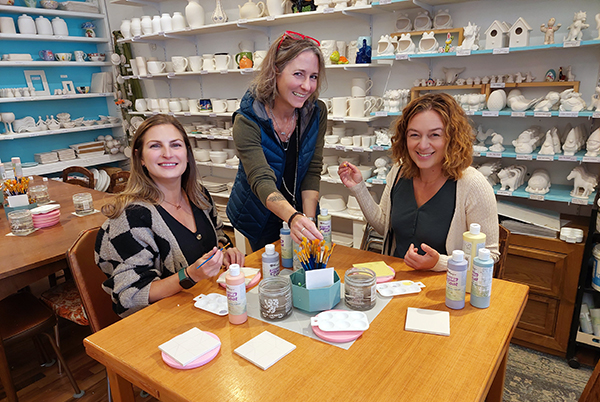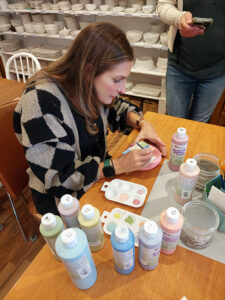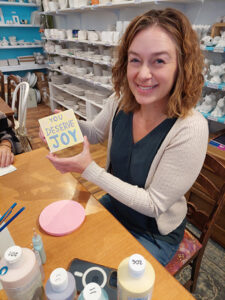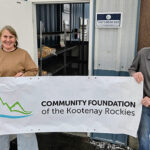Home »

Clothesline Project coming to Invermere
By Stephanie Stevens
Why didn’t you leave?
Why didn’t you ask for help?
Why didn’t you tell anyone?
Nearly all survivors of domestic abuse are asked the same trilogy of questions.
But reaching out is not as straightforward as it seems. Fear, humiliation and a feeling of utter isolation often combine to make reaching out seem all but impossible.
“For seven years, I endured emotional, mental, physical and financial abuse at the hands of my now ex-husband,” said Alice (not her real name). “No, it didn’t start that way, over time I was isolated, broken and defeated. I was afraid and embarrassed to tell anyone what was happening in my home and had become a master at masking the hell I was living in.
“I concealed my pain with a brave face as if everything was perfectly fine and I learned to behave the best I could to keep him happy. I attempted to leave multiple times when things got really bad but always went back to his broken promises of changed behaviours. Besides, I had no money of my own, and where was I going to go? I had two young kids to take care of. Over the years he only became more controlling and violent. It didn’t matter what I did, or didn’t do, something would trigger him and I was the one in the crossfire.”
Alice was caught in a cycle of abuse: anger and violence, followed by promises of change and love.
One December day that all changed.
“He almost killed me, on two separate occasions, in one day, only hours apart.”
She isn’t sure what stopped him either time, but Alice knew then she had to do something for her own safety and that of her children: she had to stay alive for them. Her carefully crafted facade of calm and happiness crumbled, and she was urged to contact the Family Resource Centre in Invermere, now Family Dynamix (FDX).
Despite the fear he would find out she was asking for help, Alice sent an email from work.
“Right away I received a reply from Wendy, the receptionist, with encouragement… with assurance regarding my safety,” she said. “I soon met with a support worker and was instantly met with care and compassion. In that moment, years of shame and abuse came off my shoulders. I let it all out and she assured me I wasn’t alone in this, and none of it was my fault.”
Shortly after that email, Alice and her children were in a safe home, and later, with the help and support of the Women’s Resource Centre, they moved into their own home, and Alice finally felt like she could let her guard down. Slowly, with that support, Alice made the challenging transition back to independence.
“I knew this was my chance to get my life back, get ME back. It wasn’t easy, I thought leaving would end the manipulation, the lies, and the abuse. It did not, but with the support and guidance of the support workers, I used every resource that was given to me to keep going. I took responsibility for my life and my children’s. It wasn’t our fault that we were in this position, but it was my duty as a mother to carry on. I was taking my power back.”
Dru Wagner, Sexual Assault Support Services Coordinator and Women’s Outreach Worker with FDX, has organized an installation of The Clothesline Project to help bring awareness of stories like Alice’s in our community.

“I was at a domestic violence conference in Nelson when I first heard of it,” said Wagner. “There was a clothesline right in the foyer, with white tee shirts with art on them.
“We want to start conversations and get people thinking.”
The project was first conceived and brought to life in October 1990 by a group of women in Hyannis, Massachusetts. Visual artist Rachel Carey-Harper came up with the concept of the clothesline and it debuted as part of the annual “Take Back the Night” march and rally.
There were 31 shirts on display, and as the evening progressed, more were decorated and added. Now, over 500 Clothesline Projects are held internationally.
 A clothesline, traditionally a woman’s tool, was the place women would work to hang clothes and talk over fences, exchanging news, offering support and advice. Painting and decorating the tee shirts and hanging them up on the clothesline is symbolic of using that tool as a continued form of communication.
A clothesline, traditionally a woman’s tool, was the place women would work to hang clothes and talk over fences, exchanging news, offering support and advice. Painting and decorating the tee shirts and hanging them up on the clothesline is symbolic of using that tool as a continued form of communication.
In addition to the clothesline, which will be set up at the Invermere Public Library Dec. 3- 6, Wagner said FDX has partnered with Carm Haven Studios to create tiles for a symbolic quilt. A vigil will recognize the National Day of Remembrance and Action on Violence Against Women in Canada on Dec. 6.
“We already have some painted tee shirts at FDX, and we are also creating a ceramic quilt, made up of tiles painted by members of the community,” she said. “It will be donated after it is done.”
The tile painting nights are set for November 4, 5 and 6.
“Carm would prefer that anyone interested in painting a tile can call our office at 250-341-3963 to register for one of these nights,” Wagner said.
As for tee shirts, which are being donated by the Invermere Health Care Auxiliary Thrift Store, Wagner said they opted for all shapes and sizes of shirts, and decorating them is not limited to colour: messages can be written on as well.
“This is personal to each person who participates whether it is for them or someone they love, so we want to ensure they can express themselves,” she said. “Both the shirts and tiles can be painted by anyone, not just survivors.”
 Traditionally, different colours represent different types of abuse: white, for someone who died of domestic violence; yellow for survivors of physical assault or domestic violence; red, pink and orange for survivors or rape or childhood sexual abuse; blue or green for survivors of incest of childhood sexual abuse; purple for those attacked because of sexual orientation; brown or grey for survivors of emotional, spiritual or verbal abuse; black for someone disabled as the result of an attack or someone assaulted because of a disability.
Traditionally, different colours represent different types of abuse: white, for someone who died of domestic violence; yellow for survivors of physical assault or domestic violence; red, pink and orange for survivors or rape or childhood sexual abuse; blue or green for survivors of incest of childhood sexual abuse; purple for those attacked because of sexual orientation; brown or grey for survivors of emotional, spiritual or verbal abuse; black for someone disabled as the result of an attack or someone assaulted because of a disability.
“Members of the FDX will be on hand if anyone wants to talk or share their experience or reach out for help (during the days of the Clothesline Project),” said Wagner. “The most powerful message we can send is you are not alone: a person experiencing abuse can feel so isolated.”
It was finally knowing she was not alone that gave Alice the strength to make the change she needed to make. Today she works with FDX to help others like herself find a safe port while they escape abuse.
“Today, I now look back, recognizing the tremendous strides I have made over the years as a survivor of domestic violence,” she said. “I couldn’t have done it alone, and I didn’t have to. I believe I wouldn’t be here today if wasn’t for the Women’s Centre and the many other people in my life. I am eternally grateful to everyone. Recovering from trauma is different for everyone, and I am still healing, and that’s ok, I decided to leave and live, and that’s exactly what I’m doing.
“I was not a victim. I am a survivor.”
Lead image: Heather Macleod, Carmen Lewis and Jessica Clark paint ceramic tiles. Stephanie Stevens photos
e-KNOW







